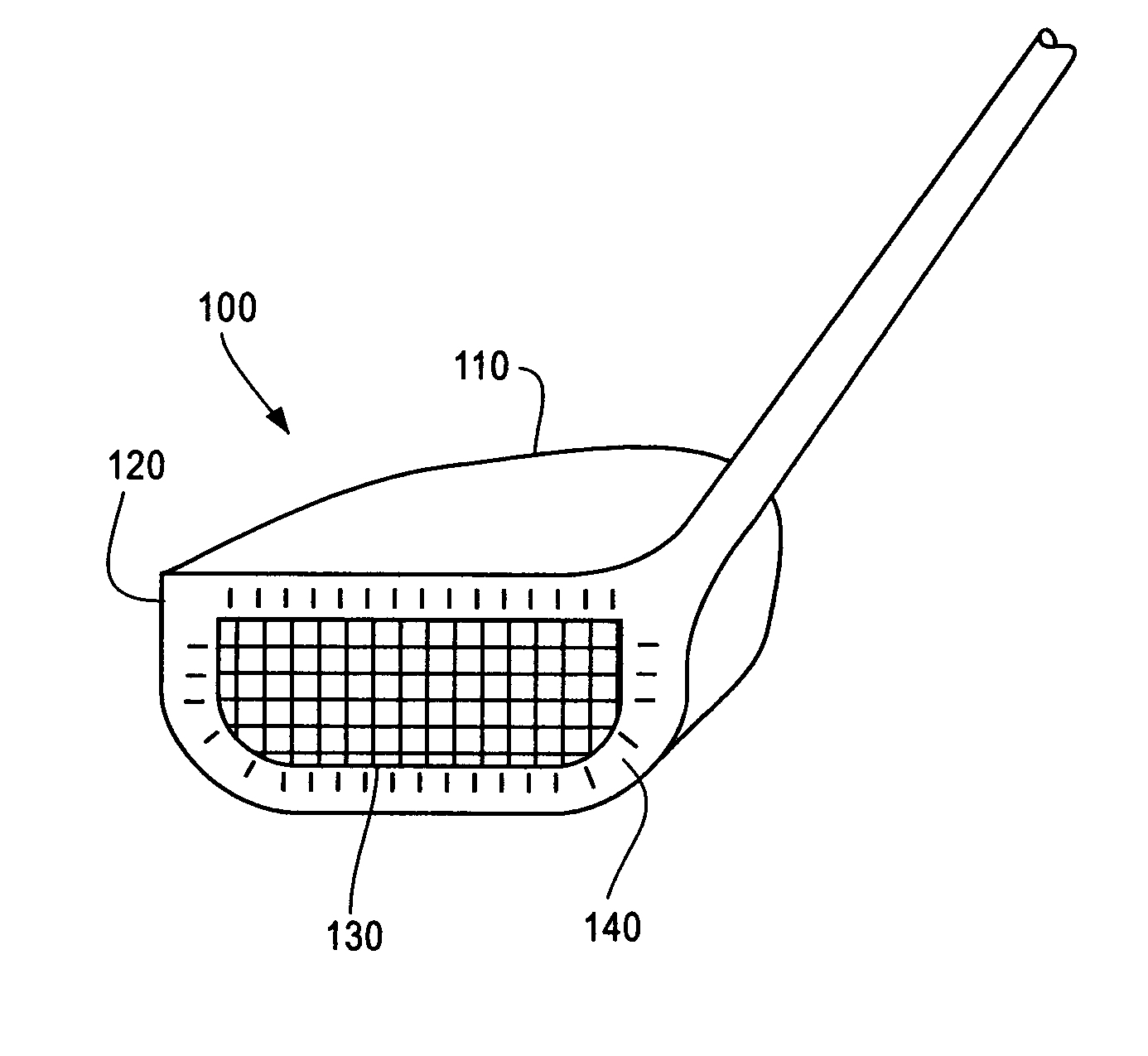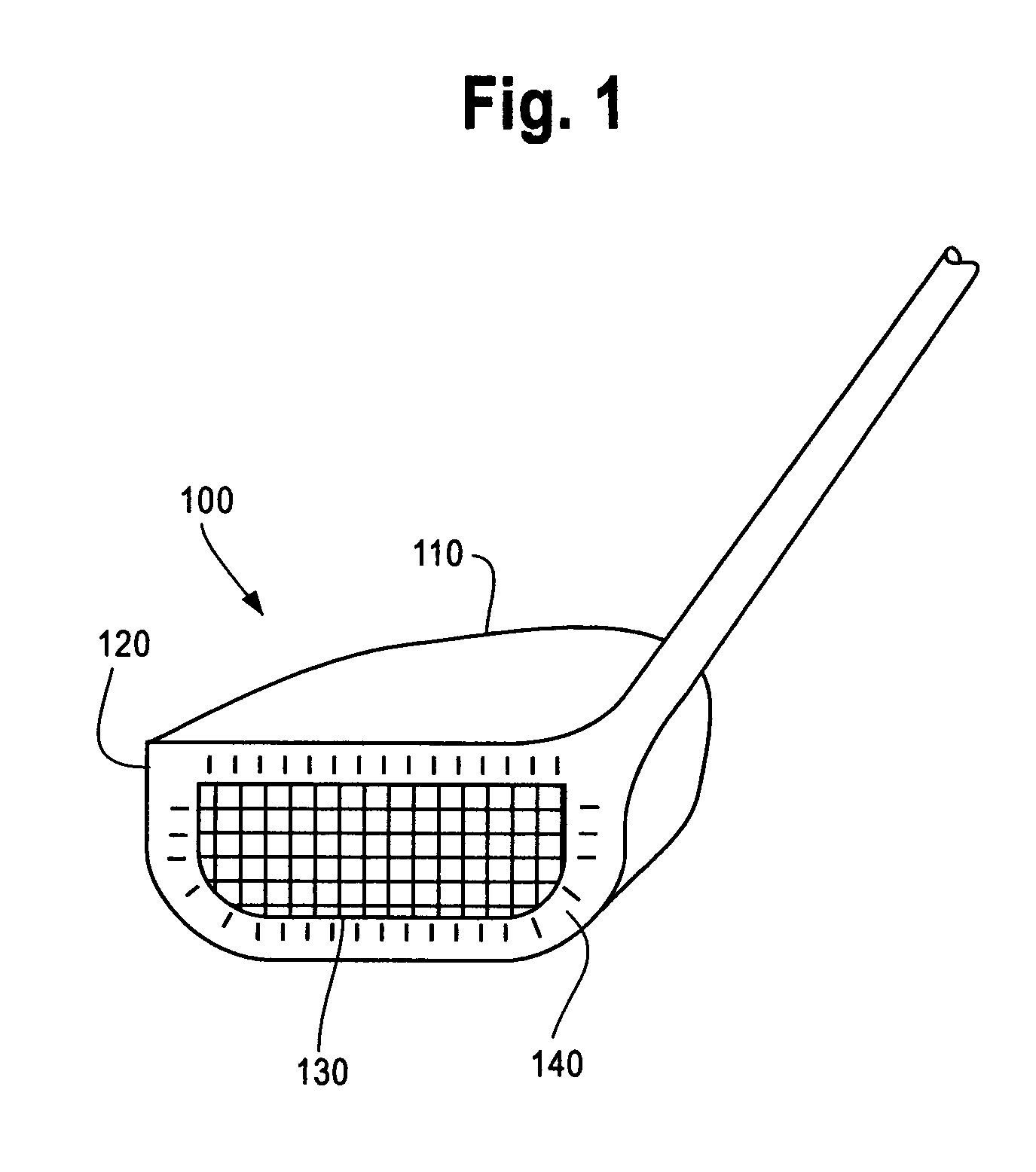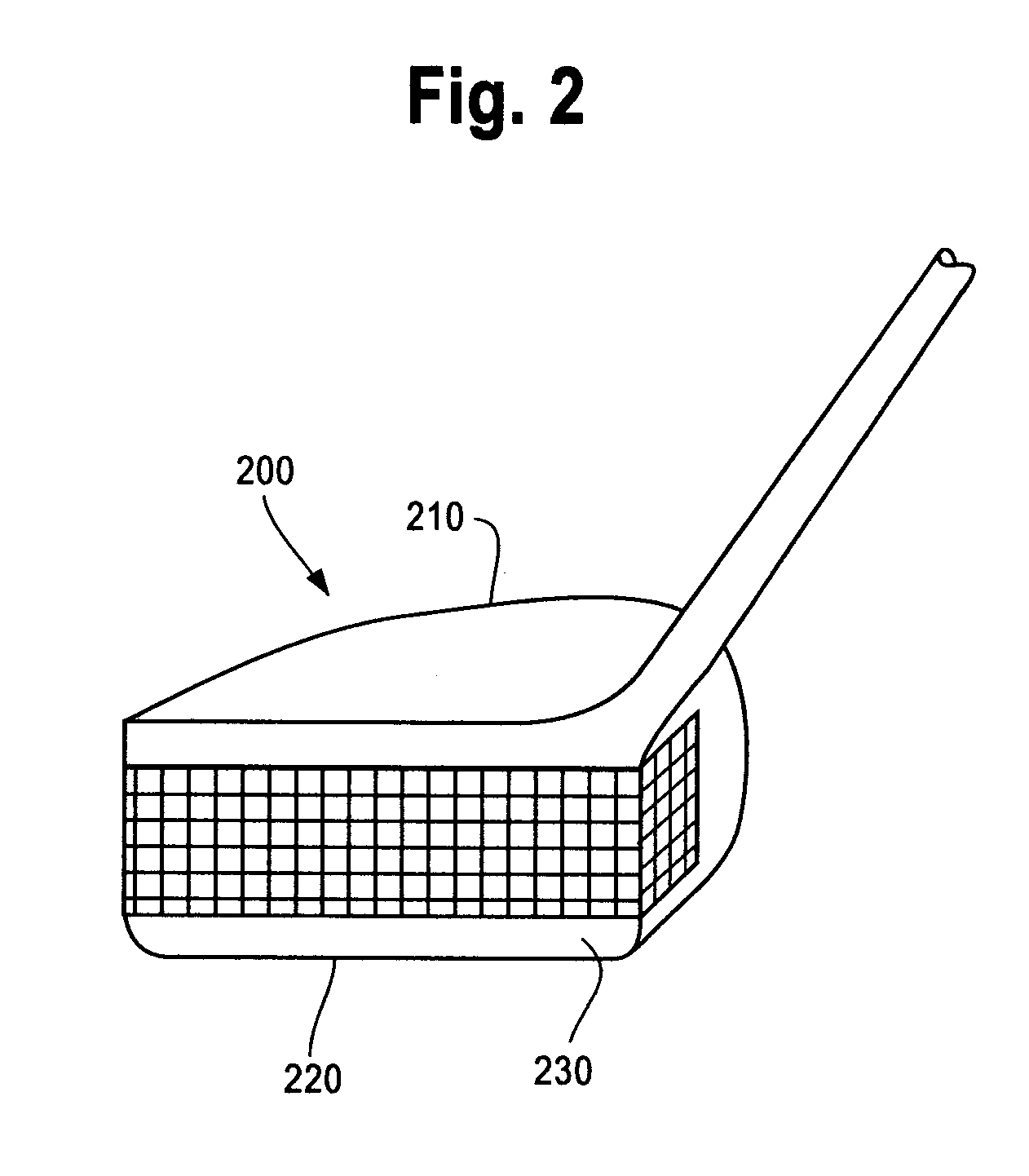Higher performance golf club and attachment for golf club, golf ball, athletic shoes, and athletic shin guards using shear-thickening fluids
a technology of golf clubs and thickening fluids, applied in the field of improved athletic equipment using shear thickening fluids, can solve the problems of increasing the apparent viscosity of the thickening fluid, adding more weight for the wearer to carry, and many amateur golfers struggling to hit shots that go straight but are often unsuccessful, so as to reduce side spin and improve athletic performance. , the effect of inhibiting side spin
- Summary
- Abstract
- Description
- Claims
- Application Information
AI Technical Summary
Benefits of technology
Problems solved by technology
Method used
Image
Examples
Embodiment Construction
[0035]FIG. 1 illustrates a golf club 100 according to an embodiment of the present invention. The golf club 100 includes a golf club head 110, a golf club face 120, a shear thickening fluid composite 130, and epoxy 140. The shear thickening fluid composite 130 is affixed to the golf club face 120 by epoxy 140.
[0036]Prior to applying epoxy 140, the surface of the golf club face 120 may be roughened with an abrasive such as sand paper. In addition, small pegs may stick out of the golf club face 120 to give the epoxy 140 something to adhere to in addition to the shear thickening fluid composite 130.
[0037]The shear thickening fluid composite 130 is preferably composed of a fabric made from Kevlar that contains a shear thickening fluid composed of silica (i.e. silicon dioxide) particles preferably within the solvent ethylene glycol. The shear thickening fluid composite 130 can also be a concentrated emulsion of shear thickening fluid (i.e. silicon dioxide particles in ethylene glycol at ...
PUM
| Property | Measurement | Unit |
|---|---|---|
| Weight | aaaaa | aaaaa |
| Circumference | aaaaa | aaaaa |
| Elasticity | aaaaa | aaaaa |
Abstract
Description
Claims
Application Information
 Login to View More
Login to View More - R&D
- Intellectual Property
- Life Sciences
- Materials
- Tech Scout
- Unparalleled Data Quality
- Higher Quality Content
- 60% Fewer Hallucinations
Browse by: Latest US Patents, China's latest patents, Technical Efficacy Thesaurus, Application Domain, Technology Topic, Popular Technical Reports.
© 2025 PatSnap. All rights reserved.Legal|Privacy policy|Modern Slavery Act Transparency Statement|Sitemap|About US| Contact US: help@patsnap.com



